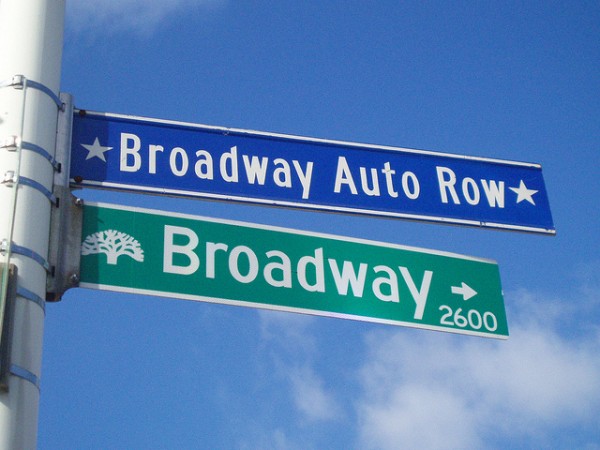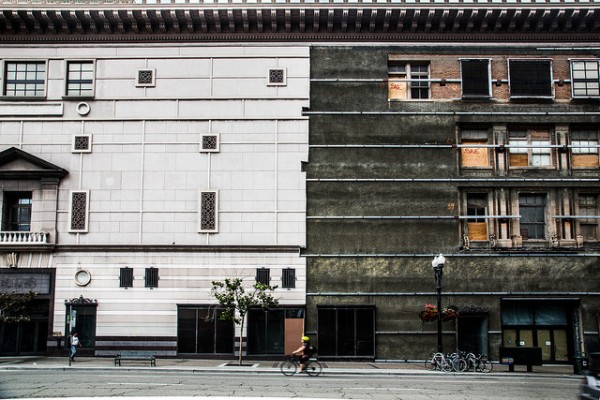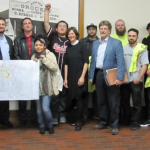Who will our future Oakland be for?
By Anthony Federico, Associate Director of East Bay Housing Organizations
In September, Uber announced its purchase of the Sear’s building in downtown Oakland, and in an instant, the story of Oakland changed. A global tech giant filling 330,000 square feet of iconic downtown Oakland office space with 3,000 employees sends a clear message: Oakland is in high demand, new capital wants to come to our city, and the whole world is watching.
It’s exciting to see investment and development finally coming to Oakland, and bringing the potential for prosperity and opportunity that the City’s communities have been hungry for. But who will new investment serve, who will have access to new opportunities, and who will our future Oakland be for?

In 2008, over a dozen non-profits, resident groups, and unions came together to form the Better Broadway Coalition, a campaign of the Great Communities Collaborative. Together, we worked for over five years to shape the city’s planning vision and policy framework for Broadway Auto Row, the stretch of Broadway between 23rd St and the 580 that connects to the future home of Uber. Our coalition has advocated together for neighborhood-serving retail, affordable homes, quality jobs for Oakland residents, green transportation, and walkable streets. We urged Oakland’s planners and decision makers to answer that key question in the Plan for the neighborhood: as new infrastructure, business, housing and services come to Broadway over the next 20 years, who will the neighborhood be for?
Many of our Coalition’s vision and recommendations made it into the final plan, but some did not. The City did not require affordable housing as part of new development. From the City’s perspective, this would have added cost to development in the very neighborhood where it was trying to attract it. Advocates repeatedly heard: “the market isn’t there” or “it won’t pencil.”
Now, just one and a half years after the Plan’s adoption, over two-thirds of the 1,800 housing units projected for the entire neighborhood over the next 20 years have already been entitled. The Sprouts grocery store, the massive residential development planned by the Blackstone Group (the global investment giant’s first deal in Oakland), and the arrival of Uber show that Broadway Auto Row, and Oakland overall, is no longer suffering from the recession. The market is indeed – overwhelmingly – here.

Oakland’s leaders must act quickly to ensure that new investment serves all income levels of our communities, including low-income workers and communities of color who have lived in and near the neighborhood for generations. This means fighting gentrification and displacement by reforming the condo conversion ordinance, replacing demolished affordable homes on a one-to-one basis, committing to using our City’s scarce public land for public good, and requiring developer contributions for affordable housing.
We need a policy framework for Oakland that shapes this investment into a balanced, inclusive, and sustainable neighborhood. Oakland has the activism, leadership, community power, and history it will take. Now, we need bold vision and action to change the story of Oakland and make this a reality.
Learn more about East Bay Housing Organizations and the Oakland Community Investment Alliance here.
Crossposted from The San Francisco Foundation blog.





